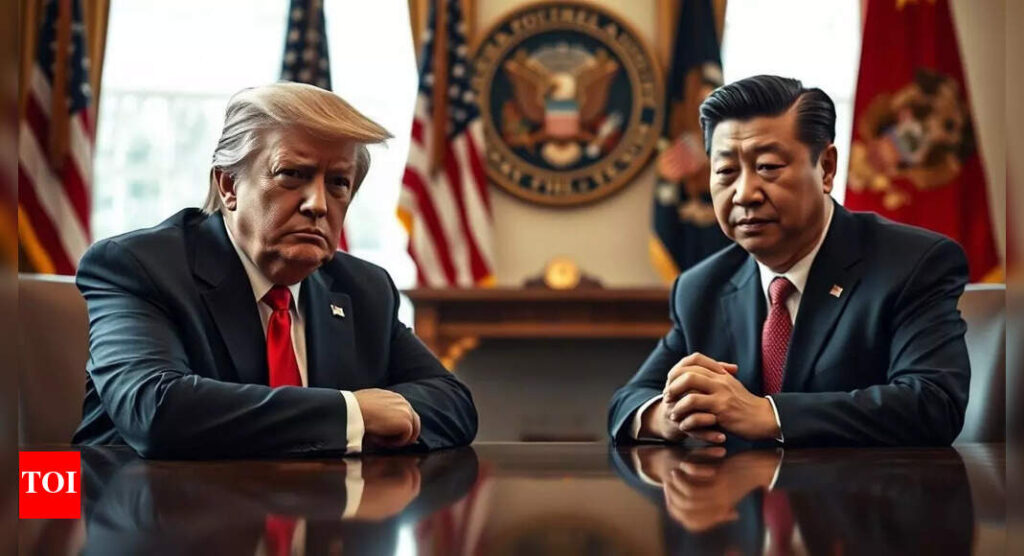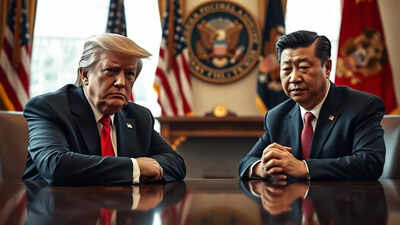
China seems to have diversified its export markets away from the US, reporting a record trade surplus despite the global turmoil and uncertainty created by American President Donald Trump’s tariff war.China achieved a historic trade surplus of approximately $586 billion in the first six months of the year, with exports to the United States showing signs of stabilisation despite the ongoing tariff situation that has disrupted international trade.June saw exports increase by 5.8% year-on-year, reaching $325 billion, surpassing analysts’ expectation. Additionally, imports registered their first positive growth since February, rising by 1.1%, according to statistics released by the General Administration of Customs on Monday.
China Finds Other Markets Apart From US
Whilst exports to the United States declined by 16.1% compared to the previous year, following May’s 34% decrease, Chinese businesses successfully expanded their market presence elsewhere, according to a Bloomberg report. Notably, exports to the Association of Southeast Asian Nations (Asean) member states demonstrated remarkable growth, increasing by 17% compared to the same period last year.Also Read | India-US trade deal: Indian team reaches Washington DC for fresh round of talks; Donald Trump’s tariff deadline nears“China’s trade withstood challenges and showed growth in the first half of the year,” stated Wang Lingjun, deputy head of the customs agency, during a press briefing. “But we need to note that unilateralism and protectionism are on the rise globally, and the external environment is becoming more complex, grim and uncertain,” Wang Lingjun said according to the Bloomberg report.The redirection of exports from the US market demonstrates Chinese manufacturing sector’s adaptability, providing support to their decelerating domestic economy during a particularly volatile period in global trade.
China’s Trade Resilience Sustainable?
The sustainability of this recent performance remains uncertain, as the Trump administration seeks to restrict the movement of Chinese goods to America through third-party countries.The United States recently introduced new tariffs on its trading partners, set to be implemented from August 1. Additionally, it imposed a 50% tariff on copper imports and indicated plans for additional sector-specific duties.Also Read | Countering China: India eyes Rs 1,345 crore scheme on rare earth magnets; Indian companies express interest“The pick-up in headline export growth mainly reflected the rebound of US-bound exports in June, likely due to the substantial tariff reduction following the US-China trade talks in Geneva in May,” Goldman Sachs Group Inc. economists including Andrew Tilton said in a report. “Both export and import growth surprised to the upside.”Despite US tariffs on Chinese products decreasing to approximately 55% from a peak of 145% in early April, China faces increasing challenges from America’s developing trade policies.A recent accord with Vietnam includes a 20% tariff on Vietnamese exports to the United States and a higher 40% duty on transshipped goods, addressing a strategy Chinese exporters have traditionally used to avoid American tariffs. This measure could reduce demand for Chinese products exported directly to the US and affect components used in supply chains across various countries.US Treasury Secretary Scott Bessent announced plans for an upcoming meeting with his Chinese counterpart to further their ongoing dialogue.The robust trade performance provides a positive signal for the economy, which has been struggling with deflation and a prolonged property sector downturn that has affected consumer spending and asset values. According to a Bloomberg survey, official data releasing on Tuesday is anticipated to reveal a 5.1% year-on-year increase in gross domestic product for the quarter ended June.“It seems the front loading of exports to the US has not ended,” said Zhiwei Zhang, chief economist at Pinpoint Asset Management. “The strong exports help to partly offset the weak domestic demand and likely keep GDP growth around the government target of 5% in the second quarter.”Also Read | India’s tough stand against Chinese FDI: Indian electronics component makers eye tie-ups with South Korea, Taiwan firms; significant shift away from China






